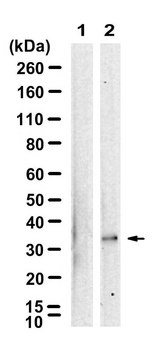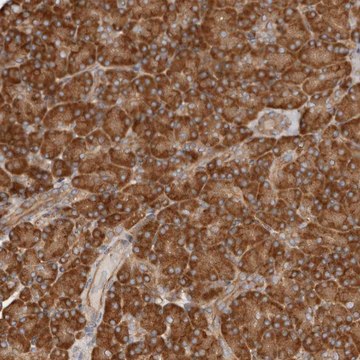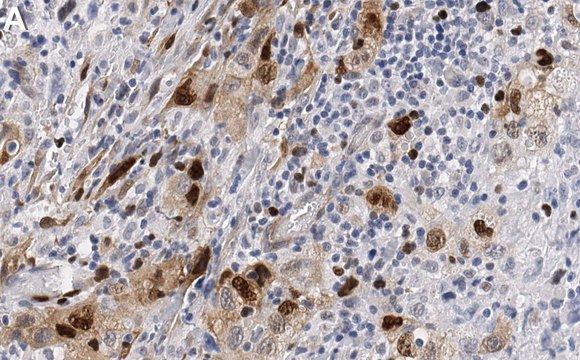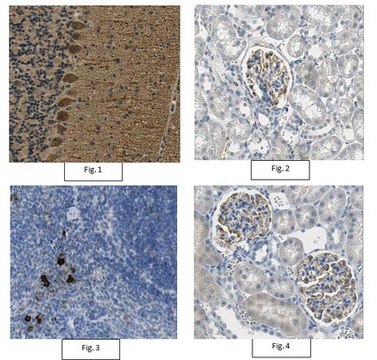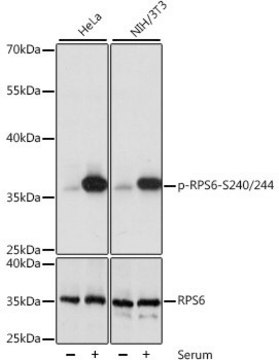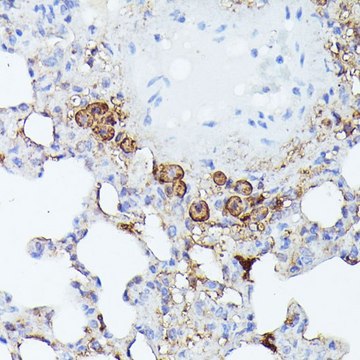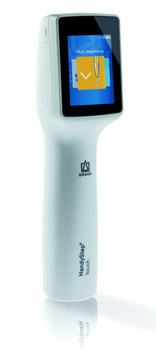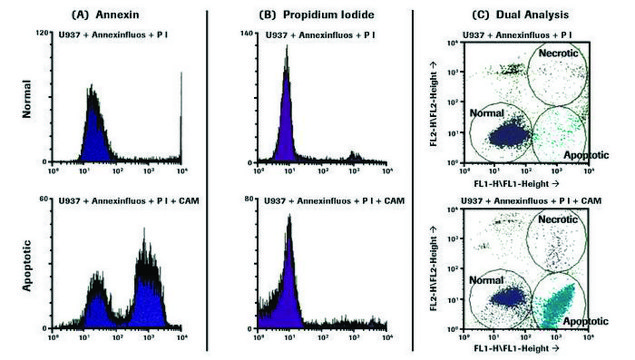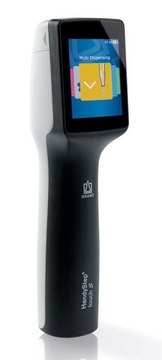一般描述
We are committed to bringing you greener alternative products, which adhere to one or more of The 12 Principles of Green Chemistry.This antibody is Preservative-free, produced without the harm or sacrifice of animals and exceptionally stable to allow for ambient shipping and storage if needed and thus aligns with "Waste Prevention", "Designing Safer Chemicals" and "Design for Energy Efficiency".
Click here for more information.
ZooMAb® antibodies represent an entirely new generation of recombinant monoclonal antibodies.Each ZooMAb® antibody is manufactured using our proprietary recombinant expression system, purified to homogeneity, and precisely dispensed to produce robust and highly reproducible lot-to-lot consistency. Only top-performing clones are released for use by researchers. Each antibody is validated for high specificity and affinity across multiple applications, including its most commonly used application. ZooMAb® antibodies are reliably available and ready to ship when you need them.
特异性
Clone 2H10 is a ZooMAb® Rabbit recombinant monoclonal antibody that specifically detects 40S ribosomal protein S6 (RPS6) phosphorylated on serine 240/244.
免疫原
KLH-conjugated linear peptide corresponding to 14 amino acids surrounding phosphoserine 240/244 from the C-terminal region of human 40S ribosomal protein S6 (RPS6).
应用
Quality Control Testing
Evaluated by Western Blotting in lysate from NIH3T3 cells treated with PMA.
Western Blotting Analysis (WB): A 1:1,000 dilution of this antibody detected phospho-Ribosomal Protein S6 (RPS6) (Ser240/244) in lysates from overnight serum starved NIH3T3 cells treated with 12-O-Tetradecanoylphorbol-13-acetate (PMA; 400 ng/mL; 20 min).
Tested Applications
Western Blotting Analysis: A 1:1,000 dilution from a representative lot detected p-RPS6 (Ser240/244) in lysate from overnight serum starved A431cells treated with EGF (50 ng/mL; 20 min).
Peptide Inhibition Assay: Target band detection in lysates from overnight serum starved A431 cells treated with EGF (50 ng/mL; 20 min) was prevented by preblocking of a representative lot with the immunogen phosphopeptide, but not the corresponding non-phosphopeptide.
Immunohistochemistry (Paraffin) Analysis: A 1:100 dilution from a representative lot detected p-RPS6 (Ser240/244) in human colon cancer tissue sections.
Immunocytochemistry Analysis: A 1:100 dilution from a representative lot detected p-RPS6 (Ser240/244) in overnight serum starved A431 cells treated with EGF (50 ng/mL; 15 min.)
Affinity Binding Assay: A representative lot of this antibody bound phospho-Ribosomal Protein S6-(Ser240/244) peptide with a KD of 1.8 x 10-7 in an affinity binding assay.
Flow Cytometry Analysis: 0.1 μg from a representative lot detected p-RPS6 (Ser240/244) in one million A431 cells.
Note: Actual optimal working dilutions must be determined by end user as specimens, and experimental conditions may vary with the end user.
目标描述
40S ribosomal protein S6 (UniProt: P62753; also known as Phosphoprotein NP33, Small ribosomal subunit protein eS6, RPS6) is encoded by the RPS6 (also known as OK/SW-cl.2) gene (Gene ID: 6194) in human. RPS6 is a highly conserved member of the eukaryotic ribosomal protein S6 family and is a component of the 40S ribosomal subunit. It plays an important role in controlling cell growth and proliferation through the selective translation of particular classes of mRNA. It is the major substrate of protein kinases in eukaryote ribosomes and its phosphorylation is stimulated by growth factors, tumor promoting agents, and mitogens. RPS6 can be phosphorylated on five serine residues (Ser235, 236, 240, 244, and 247) in the region close to the carboxy terminus. Among the serine residues 235 and 236 are shown to be directly phosphorylated by S6 Kinase that is subjected to regulation by the nutrient-mTORC1 signaling. Phosphorylation at serine 240/244 is reported to be predominantly nuclear but is also detectable in the cytoplasm, whereas serine 235/236 phosphorylated form is almost exclusively localized to the nucleus of primary human cells and is virtually undetectable in the cytoplasm, except in transformed cells where it can also be detected in the cytoplasm. RPS6 is also shown to exist in complex with the Kaposi s sarcoma-associated herpesvirus latency-associated nuclear antigen (LANA). This interaction is mediated by the N-terminal domain of LANA. This ZooMAb® recombinant monoclonal antibody, generated by our propriety technology, offers significantly enhanced specificity, affinity, reproducibility, and stability over conventional monoclonals. (Ref.: Biever, A., et al. (2015). J. Neurosci. 2015, 35(10); 4113-4130; Rosner, M., et al. (2011). Amino Acids 40(2); 595-600; Chen, W., and Dittmar, DP (2011). J. Virol. 85(18); 9495-9505).
外形
Purified recombinant rabbit monoclonal antibody IgG, lyophilized in PBS, 5% Trehalose, normal appearance a coarse or translucent resin. The PBS/trehalose components in the ZooMAb formulation can have the appearance of a semi-solid (bead like gel) after lyophilization. This is a normal phenomenon. Please follow the recommended reconstitution procedure in the data sheet to dissolve the semi-solid, bead-like, gel-appearing material. The resulting antibody solution is completely stable and functional as proven by full functional testing. Contains no biocide or preservatives, such as azide, or any animal by-products. Larger pack sizes provided as multiples of 25 μL.
储存及稳定性
Recommend storage of lyophilized product at 2-8°C; Before reconstitution, micro-centrifuge vials briefly to spin down material to bottom of the vial; Reconstitute each vial by adding 25 μL of filtered lab grade water or PBS; Reconstituted antibodies can be stored at 2-8°C, or -20°C for long term storage. Avoid repeated freeze-thaws.
法律信息
ZooMAb is a registered trademark of Merck KGaA, Darmstadt, Germany
免责声明
Unless otherwise stated in our catalog or other company documentation accompanying the product(s), our products are intended for research use only and are not to be used for any other purpose, which includes but is not limited to, unauthorized commercial uses, in vitro diagnostic uses, ex vivo or in vivo therapeutic uses or any type of consumption or application to humans or animals.

